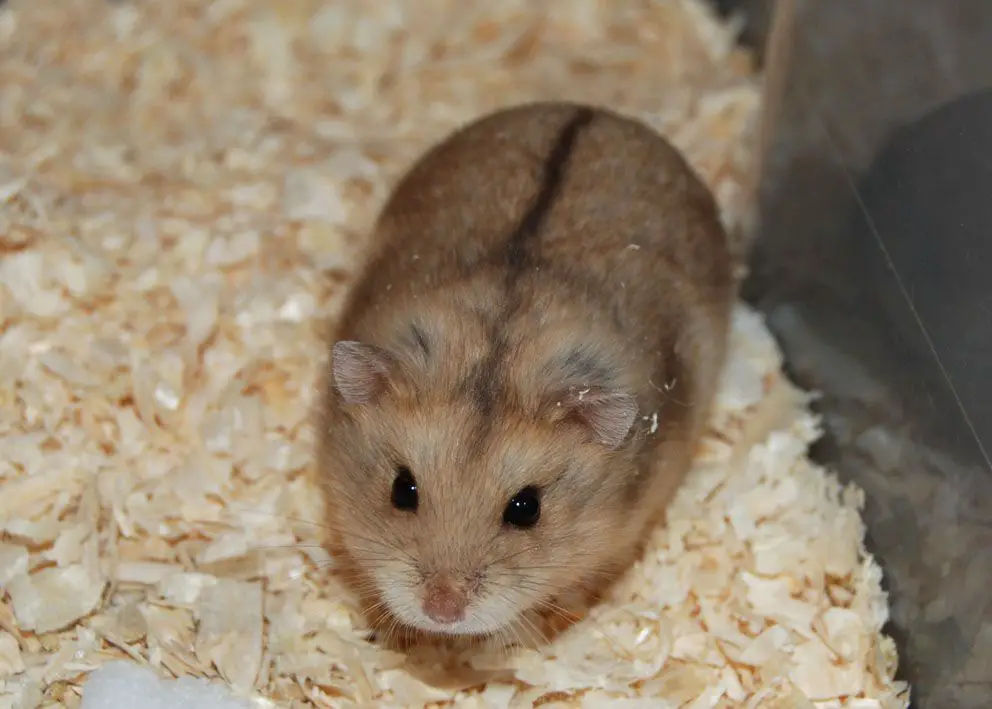What to know about Campbell’s dwarf pet hamsters?
Cambell’s dwarf hamster (Phodopus campbelli) is a dwarf hamster native mainly to Eastern and Central Asia, specifically to the steppes and semi-desert regions of northern China, Kazakhstan, Russia, and parts of Mongolia, living in the same region as other dwarf hamsters such as Roborovski and Chinese hamsters.
They were named by Oldfield Thomas after Charles William Campbell, who first discovered them in 1902 in the Djungarian region of Mongolia.
As they cannot regulate their body temperature, these hamsters have also been observed approaching the yurts of nomads in Mongolia when temperatures drop and the ground begins to freeze.
- What to know about Campbell’s dwarf pet hamsters?
- Campbell’s pet hamsters Temperament
- Housing a Campbell’s dwarf hamster
- Campbell’s dwarf hamster Specific Needs
- Feeding a Campbell’s dwarf hamster
- Common Campbell’s dwarf hamster Health Issues
- Exercising your Campbell’s dwarf hamster
- Taming a Campbell’s dwarf hamster
- Cost of keeping a Campbell’s dwarf hamster
- Where to get a Campbell’s dwarf Hamster
- Breeding Campbell’s Hamsters
- Final thoughts

Campbell dwarf hamster characteristics
Campbell’s dwarf hamsters live between 1.5 to 3 years on average (18 to 36 months) and become adults around 5 weeks; usually between 2 and 4 inches (80 mm on average) long and weighing less than 2 ounces (23 Gr on average).
Not to be confused with Djungarian hamsters since Campbell’s hamsters have longer ears, grey fur on their belly, and no dark fur on its crown.
Unfortunately, they were brought back for use in laboratories, but thank goodness they became pets in the 80s.
Campbell’s pet hamsters Temperament
Campbell’s dwarf hamsters don’t like noisy areas, they are solitary animals in their natural environment, but if you can provide them with a large enclosure, with all the necessities for each of them, they can live together provided they are raised together and preferably of the same gender.
They are nocturnal animals who spend most of their time digging, foraging and storing food, inspecting and exploring their enclosure (territory) and riding the wheel.
This wouldn’t stop them from coming out of their tunnels during the day to inspect their enclosure, eat or drink a little water, do a few turns on the wheel and return to their hide to go back to sleep.
Campbell hamsters are quite friendly and are easily tamed when young, they have a calm temperament and will quickly adapt to their new enclosure and owner.
Do Campbell hamsters make good pets for kids?
Absolutely, but you’ll always need to supervise the child and make sure your hamster is well-fed, remind him that he’s an animal with fragile bones, so you’ll need to take it gently, hamsters don’t like to be disturbed or woken up when they’re asleep, you shouldn’t often change the location of things in his enclosure …etc.
Housing a Campbell’s dwarf hamster
As with any other hamster, you should never put them in a small cage; it’s always preferable for them to have enough space, at least 800 square inches (floor area). Avoid putting it in direct sunlight or in a noisy spot as well.
Cambell hamsters tunnel almost 3 feet below the ground in their natural environment, so you’ll need at least 15 inches of a melange of aspen wood shavings and unscented natural paper-based one or any other suitable hamster bedding.
He’ll also need a bowl for food, two water bottles, a sandbox for sand baths, hides, tunnels, enrichment, hay, an exercise wheel, and any other decoration you think will help him explore and enjoy his territory, like a bamboo branch, maple, elm …etc.
Campbell’s dwarf hamster Specific Needs
Campbell hamsters know how to take care of their fur on their own, just put a large sandbox in their enclosure for their daily sandbath and do a little cleaning of this sand every time it starts to get dirty, just with a sieve.
Also, remember to keep the enclosure clean and change the bedding in areas where your hamster often relieves itself, and finally a little general cleaning once every 20 days at least would be most welcome, especially in hot weather.
It’s also a good idea to pick up any uneaten bits of veggies and fruit to prevent them from rotting in the enclosure and to check its food stashes from time to time.
Feeding a Campbell’s dwarf hamster
Campbell’s hamsters should always have a little food in their bowl, and some enrichment scattered here and there in their enclosure.
Their diet must be varied; provide a balanced diet rich in whole grains, vegetables, and high-quality hamster pellets, a lot of good fresh hay to support their overall health.
Don’t just rely on the commercial dwarf hamster food, I strongly recommend that you prepare your own hamster seed mix, and give it its daily vegetable ration.
These hamsters should also always have something to chew on to file their teeth, to avoid dental problems that will later become digestive problems.
They should also have two bottles of water, especially in the warmer months.
The most important thing to remember about Campbell’s pet hamsters is to avoid foods containing too much sugar, such as sugary fruit, corn, peas, carrots, yogurt drops, and some mass-manufactured treats.
Common Campbell’s dwarf hamster Health Issues
In addition to the other illnesses that can affect all hamsters, notably wet tail and respiratory problems, Campbell’s hamsters, especially those bought in pet stores, are prone to diabetes (usually an inherited condition). They are known to have extremely poor eyesight and sometimes even are prone to Glaucoma, a disease that affects the eyes but is not fatal.
You should also find out if there’s an exotic vet in your area, so you know where to go and who to call in an emergency.
Also, keep an eye out for these signs of diabetes in your Campbell’s hamster:
- Increased thirst
- Frequent urination
- Sudden weight loss
- Loss of appetite
- Lethargy
Hamsters are generally hardy animals when well-fed and housed, but they hide their illness well to avoid attracting the gaze of predators, but this is an innate behavior that often causes them trouble, you will only detect their illness once they can no longer hide it!!!
Exercising your Campbell’s dwarf hamster
Campbell’s hamsters are genetically predisposed to exploring large areas; in their natural habitat, they can roam up to 6 Miles every night.
So you need to provide him with a large enclosure – I often recommend an Ikea Detolf – but also install a wheel and lots of tunnels, tubes, and things to explore in his cage.
This will prevent him from becoming obese, from getting diabetes and will give him an occupation and mental stimulation that will protect him from stress and related illnesses.
Taming a Campbell’s dwarf hamster
Campbell’s dwarf hamsters are small and fast, but if you show a little patience and tame them, they’ll let you pick them up and play with them.
Like all other hamsters, it’s best to buy an already-tamed Campbell hamster or find a young one, as taming them is always easier when they’re young.
You should keep your other pets away from your Campbell hamster, especially in the early days, and introduce them gradually.
Campbell hamsters will let you take them, but be aware that they move a lot and don’t like to be trapped in your hands, so don’t stop them from getting off when they start to move, falling from high areas may harm your hamster.
Cost of keeping a Campbell’s dwarf hamster
Once you get all that your new hamster needs and got him installed in its cage, which could cost you around $250, Campbell’s hamsters will only cost you less than $50 a month for their food, enrichment, toys, and eventual change of bedding.
Don’t look at expenses when it comes to your hamster’s well-being, because if he gets sick because of a bad enclosure, poor hygiene, or bad food, the bill will be a bit steep for the vet.
Where to get a Campbell’s dwarf Hamster
As with any other hamster, to avoid getting hybrids, I also recommend that you contact an ethical breeder, who really loves these adorable hamsters, so that you not only get a Campbell’s hamster already tamed if you like, but also a hamster in good health and above all one that doesn’t come with genetic predispositions to disease and bad behavior, which is usually the case when you buy your hamster elsewhere. Read this article to learn how to choose one.
Choose hamsters of the same litter, age, and gender if you want to bring home several; I always advise my readers to place each hamster in its own large enclosure to ensure a long and happy life.
The price of a Campbell’s hamster will be between $20 and $30, but if you buy him from a breeder who is passionate about his hamster and gives you all the information and advice you need, as well as a telephone number in case of need, give him a tip, this will encourage him and sincerely, he deserves it.
Breeding Campbell’s Hamsters
What distinguishes Campbell’s Russian hamsters from the Syrian hamsters and the other hamster species is that the female doesn’t chase away the male after the baby hamsters are born, usually a litter of 4 to 6 pups, sometimes a lot more!
You should also know that only the Winter White hamsters and Campbell’s dwarf hamsters are able to interbreed, never with another hamster species, but it’s always recommended to mate them only with Campbell’s hamsters for healthy pups.
In fact, with Campbell’s hamsters, the male will continue to look after the female during gestation (18 to 21 days), and even after the pups are born, he’ll look after them and make sure the female always has food, even looking after the babies when the female hamster wants to go for a walk.
If you want to limit the number of births, you need to separate the males from the females just after the baby hamsters are born, otherwise, they’ll quickly start mating again, even before the first litter is grown.
Final thoughts
Campbell’s hamsters are relatively low-maintenance, gentle animals, that can bring joy and companionship to their owners; easy to care for, and cheap compared to other pets.
All they need is a large enclosure, set up in a quiet corner, a well-equipped enclosure, their own food (balanced diet is essential), and appropriate healthcare, and they’ll soon thank you by interacting with you and letting you hold and play with them.


